Long Queues Reported In Several Iranian Cities For Subsidized Bread

According to reports received by Iran International subsidized bread is only available in limited amounts in some Iranian provinces causing long queues.

According to reports received by Iran International subsidized bread is only available in limited amounts in some Iranian provinces causing long queues.
Confirming the reduction of the subsidized flour quota and bread rationing in some regions, an informed source told Iran International: "The plan to increase the price and pay the bread subsidy to the low-income people instead is under review."
Mohammad Jalal, the Director of the Flour and Bread Subsidy Smart Plan also confirmed the long queues of bread in some provinces, saying: "This issue is caused by the increase in the demand amid the rise of travels and also the displacement of seasonal workers."
More than a year has passed since the start of the flour and bread subsidy smart plan. According to the claim of the executives, this plan has been implemented with the aim of preventing the smuggling of flour and bread to neighboring countries and preventing the annual waste of more than 4 million tons of bread in Iran.
The government had also claimed the price increase and rationing of traditional bread are their red lines.
Implementation of the subsidy plan has brought problems for bakers and bread buyers. Bakers complain about low prices, while bread production costs are on the rise.
The subsidy was introduced in April 2018 when former US president Donald Trump signaled his intention to withdraw from the Obama-era nuclear agreement with Iran known as JCPOA, and Iran’s national currency began to nosedive. Prices for imported goods skyrocketed and the government decided to provide cheap dollars to importers of essential goods to keep prices low.
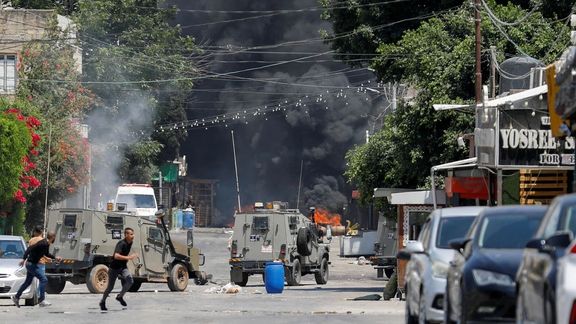
Israel says its ongoing offensive in the Palestinian city of Jenin in the West Bank is aimed at Iran-backed militant groups Palestinian Islamic Jihad and Hamas.
Foreign Minister Eli Cohen said Monday: "We don’t have a fight with the Palestinians, actually, our fight is with the proxies of Iran in our region, which is mainly with the Hamas and the (Palestinian) Islamic Jihad, both terrorist organizations financed by Iran.”
He went on to say that "due to the terror organization and the funds they receive from Iran, the Jenin camp has become a center for terrorist activity”.

The incursion, which resembled the wide-scale military operations carried out during the second Palestinian uprising two decades ago, took place two days after the Islamic Jihad's Secretary-General Ziyad al-Nakhala said that anti-Israeli actions in the West Bank reflect Iranian Supreme Leader’s directives.
“There was a great focus in order for the West Bank to move from a state of coexistence and calm, to a state of resistance that we see today, and of course all of this is under the directives of Ali Khamenei,” stated al-Nakhala. He said the recent visit to Tehran was crucial: “During our last meeting with him in Tehran, he renewed the call for that and for the development of resistance in the West Bank.”

Israel sent drones to strike targets in a militant stronghold in Jenin early Monday and deployed hundreds of troops in the area. The attack set off a gunbattle lasting into the morning. Israeli troops remained inside the Jenin refugee camp at midday Monday.
Lt. Col. Richard Hecht, an army spokesman, said the goal of the operation was to destroy and confiscate weapons, adding: “We’re not planning to hold ground. We’re acting against specific targets.”
The foreign minister's remarks were echoed by the Israeli Ambassador to the United States Mike Herzog, who also said on Monday that Jenin and its refugee camp have become a base for Iran and that Israel cannot stand by as its citizens are targeted by terrorists.
The operation followed growing domestic pressure for a tough response to a series of attacks on Israeli settlers, including a shooting attack last month that killed four Israelis.
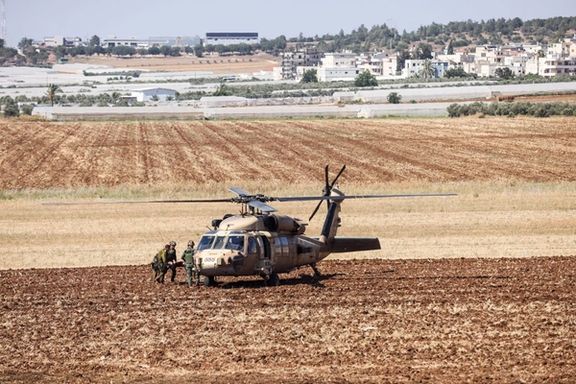
Retired Brig. Gen. Amir Avivi, who served as a battalion commander in the northern West Bank in 2002, described Monday’s operation as a “raid” in which the army moves in and then withdraws, but added that the size of the force indicated the operation could last “for a longer period of time, not just a few hours, but maybe a few days.”
Palestinian health officials said at least seven Palestinians were killed and 27 wounded in Jenin, while another man was killed in the city of Ramallah after being shot in the head at a checkpoint. In Ramallah, Palestinian Prime Minister Mohammad Shtayyeh condemned the Israeli military raid, calling it a "new crime."

Iran’s Foreign Ministry spokesman Nasser Kanani described the attack as a “tragic incident” and an example of “state terrorism,” but went on to add a line of the regime’s propaganda in it, saying: “Crime is institutionalized in the nature of the Zionist regime. The latest crime in Jenin showed once again that peace and compromise cannot deter the regime’s war machine and that this regime is neither trustworthy nor seeking peace.”
Iran International reported in May that Iran has also urged Hamas to join Islamic Jihad in a new round of attacks against Israel following the killing of three militants in Gaza. Tehran exerted strong pressure on Hamas to respond to assistance it has received over the years and unite with Islamic Jihad to launch a fresh wave of attacks, informed sources said.

According to Israeli Defense Minister Yoav Gallant in April, Iran is the “driving force” of a recent multi-front escalation with Israelis through its proxies across the region, funding Hamas – that rules the Gaza Strip -- with $100 million annually with additional funding worth tens of millions of dollars going to the second largest terror group in the Palestinian enclave, the Palestinian Islamic Jihad. Galant said the regime also provides Hezbollah in Lebanon with $700 million a year, as well as “knowledge and strategic weaponry” such as precision-guided munitions.
The evolution from guerrilla-terrorist militias to armies results from a long process initiated by Tehran with the active assistance of Hezbollah in Lebanon. The escalating events in recent months have shown the ongoing coordination and consultation among the top leaders of Hamas, Hezbollah and PIJ in Beirut, Damascus, and Tehran, with the aim of creating a united front facing Israel from Iran-supported Lebanon, Syria, Gaza, and the West Bank.


Iraq has made available all of Iran’s frozen funds for purchasing food and medicine, the chairman of Iran-Iraq chamber of commerce in Tehran said Monday.
Yahya Al-e Es-haq who was speaking in the presence of Iranian diplomats and members of the chamber in Tehran said that an Iraqi government minister has announced that “all debts to Iran, meaning $10 billion has been transferred to Trade Bank of Iraq” and made available for buying “non-sanctioned” goods.
The chairman of the chamber of commerce did not name the Iraqi minister or say when the announcement was made. So far, nothing has been reported from Iraq.
Iraq has been importing natural gas and electricity from Iran, but due to US banking sanctions on Tehran it has not been able to make direct payments. On a few occasions, the US has issues waivers allowing Iraq to release funds for humanitarian goods.
In early June news emerged that the United States allowed Iraq to release more than $2.7 billion of its debts to Iran frozen because of US sanctions. The amount was much larger than any waivers issues before. The news was confirmed by the State Department on June 8 and led to speculations that the Biden administration was making some kind of deal with Tehran over American hostages or the nuclear issue.
If Al-e Es-haq’s statement about $10 billion being released is true, it would be a major new development. He reiterated that “there are absolutely no issues remaining with Iraqi debts any longer.”
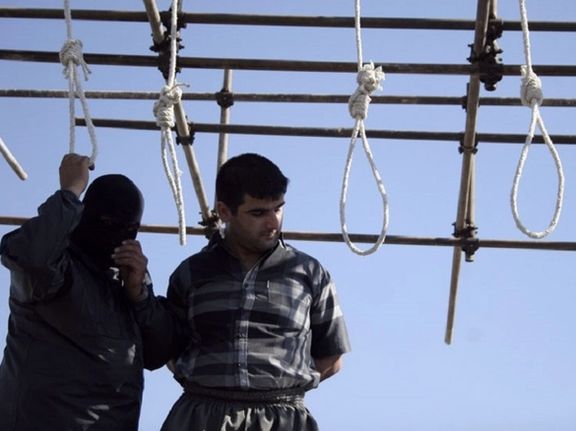
In the first half of 2023, at least 354 people, including six women, have been executed in Iran.
The Norway-based Iran Human Rights (IHRNGO) said Monday that Baluch minorities accounted for 20% of all executions. The number of drug-related executions rose 126% from the same period last year to reach 206.
As the Islamic Republic of Iran's execution machine accelerates, IHRNGO once again called on UN Member States to take action against the state's killings of death row prisoners, especially those funding joint projects with the regime.
“The death penalty is used to create societal fear and prevent more protests. The majority of those killed are low-cost victims of the killing machine, drug defendants who are from the most marginalised communities," the group's director, Mahmood Amiry-Moghaddam, said.
With many cases of executions not officially reported, the actual number is undoubtedly higher.
Earlier, the Oslo-based Iran Human Rights Organization said Iran executed 142 prisoners in May, hitting a dark record even for the Islamic Republic and the highest monthly executions since 2015, averaging five people hanged each day.
As the execution wave shows no signs of slowing, protests continue across the country, only fueled by the relentless crackdowns.

An Iranian lawmaker, Jalil Rahimi Jahanabadi has criticized President Ebrahim Raisi for appointing more and more Revolutionary Guard officers to civilian positions.
Jahanabadi told the press in TehranJuly 2: "We, at the Majles helped Raisi to instil hope among the nation. But he has appointed a military officer, IRGC General Ahmad Vahidi as interior minister, another IRGC General Mohammad Reza Gholamreza as deputy interior minister for political affairs, and yet another IRGC General Yaqoub Alinazari as governor of my constituency in Khorasan Province. Honestly, it looks like a garrison!"
The Interior Minister and his deputy have previously worked in key security positions and the governor general of Khorasan Province was previously the commander of the IRGC in the province.
Speaking about a recent move in the parliament to replace deputy interior minister Gholamreza, the lawmaker said: "The problem is not about the minister or his deputy. The problem is that all the powers of the government cannot solve the people's problems."
Jahanabadi further charged that many state officials have no understanding of the people's living conditions and do not realize that they should work together to tackle problems.
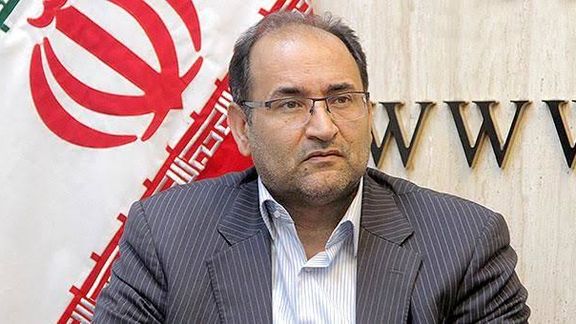
Protesting about the Interior Ministry's order to local officials not to cooperate with lawmakers during their visits to their constituencies, Jahanabadi said: "In my constituency there is a shortage of fresh drinking water, and it is essential for me to work closely with the local governor to solve the problem. "
"Otherwise, if the ministry is concerned that I might take advantage of the occasion to further my election campaign, it should know that I may not be a candidate for the next election, and there is no guaranty that the Guardian Council will endorse my qualifications," Jahanabadi added.
He pointed out that "the deputy interior minister comes from a military background. He has previously served in Iraq with not much of a success. I am surprised that he has been appointed to a key civilian position. This will affect public trust in the Majles and the government."
Jahanabadi also said during his speech in the parliament Sunday that some 80 lawmakers have signed a motion to impeach the Interior Minister. He questioned the presidium's attempt to stop the motion, adding that if it is tabled, many more lawmakers will support it. Last week, around 200 lawmakers were said to back the impeachment motion.

Meanwhile, other lawmakers have also criticized Raisi for the way he is running the affairs of the state. Moeineddin Saeedi, the lawmaker from Chabahar charged that instead of solving problems, the Raisi manipulates statistics and figures to justify his government's failure.
"Raisi talks about a flourishing economy as if he is living in another country," the lawmaker quipped.
He added that "part of the executive has become indifferent to people's problems and tends to fabricate figures to justify its inaction. The people are feeling the crunch in their livelihood as inflation rises and prices go higher."
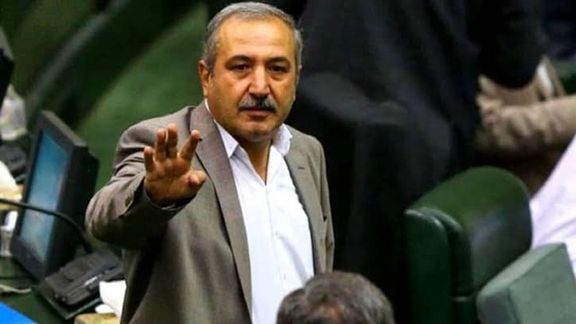
Another lawmaker, Jalal Mahmoudzadeh, predicted on Sunday that "An increasing number of Iranians are likely to turn to living in tents in the streets and parks as the problem of housing puts them under pressure with rising costs making it impossible for them to afford buying or even renting a place to live.
Rents have increases many fold in the past 5 years as the Iranian currency has lost most of its value and inflation has reached 70 percent with landlords refusing to rent properties at previous rates.
Meanwhile, referring to fabricated statistics that are being presented by government officials including the president, Mahmoudzadeh charged that "The government looks the people in the eye and lies to them."

Within the past 25 years almost 25 million Iranians have been displaced amid water scarcity worries.
Mehdi Zare’, Professor of the International Research Institute of Seismology said: “There are about 12 million marginalized people in Iran, and almost 10 million of this population are directly facing problems caused by the water crisis.”
In an interview with Hamshahri online, he said water scarcity and the subsidence of the earth have deteriorated in Iran and according to geologists, seven provinces now face dire situations.
One of these provinces is Isfahan, where land subsidence has reached the residential areas. Tehran province is also not safe from subsidence and in recent months, many cases of land subsidence were witnessed on highways around the city.
Iran ranks fourth in land subsidence in the world and 30 provinces of the country are involved in it. It is said that the land subsidence in Iran is more than five times the world average.
The main reason for land subsidence in Iran is the draining of underground water and the digging of deep wells since the 1060s, Zare explained.
Last month, Iran International obtained documents revealing that Iranian officials are aware of dangerous land subsidence but are unwilling to share it with the public.
A confidential letter revealed that about 550 square kilometers of land in and around the capital Tehran (about the size of the UK city of Manchester or the US city of El Paso, Texas) is sinking an average of over 13 centimeters (about 5.12 inches) per year.
According to another document, 380 cities and towns and 9,200 villages are at risk of land subsidence.